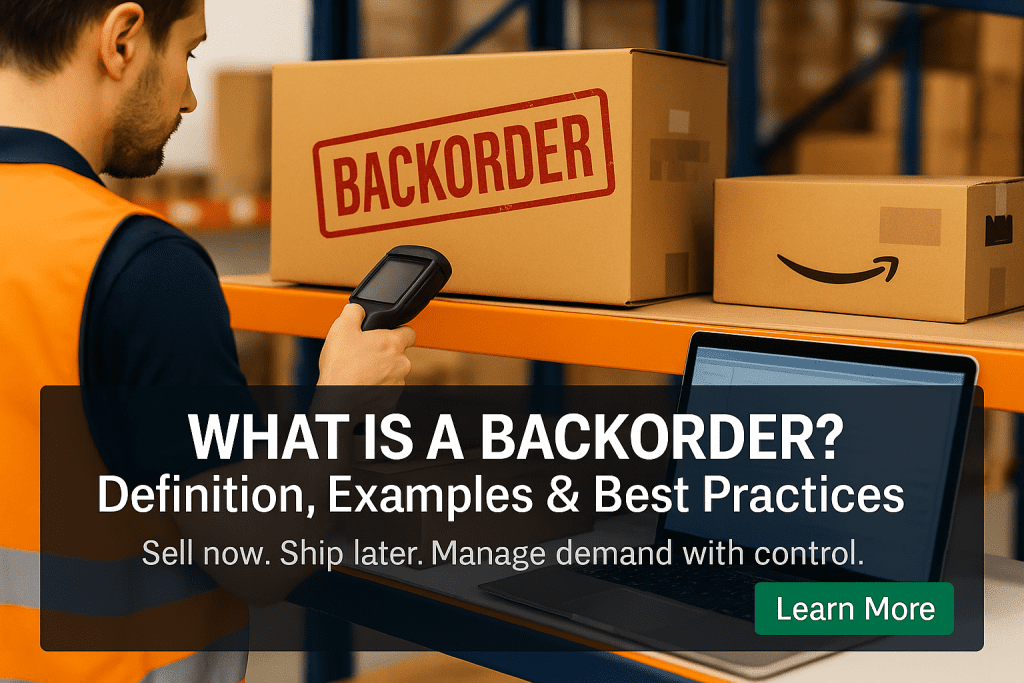Author: Jason Martin
Reviewed by: Supply Chain Solutions Lead
Last updated: November 5, 2025
Executive TLDR
A backorder happens when customers can buy an item that is temporarily out of stock, you promise to ship later.
Too many backorders signal gaps in forecasting, supplier lead times, or inventory visibility.
Reduce backorders with tighter demand planning, safety stock on top movers, and clear ASN receiving.
When backorders do happen, communicate dates, offer swaps, and prioritize the quickest replenishment.
A central Midwest hub plus clean pick and pack rules helps you catch up fast and ship in 1 to 3 days by ground.
Need a backorder plan you can trust,talk to Product Fulfillment Solutions.
Table of contents
What a backorder is
Backorder vs pre-order
Why backorders happen
The operational risks
How to prevent most backorders
How to manage active backorders
Why Product Fulfillment Solutions
FAQ
What a backorder is
A backorder is an order you accept for an item that is not currently in stock. You plan to ship the item once inventory arrives. Used well, backorders keep revenue flowing during a short outage. Used poorly, they create delays, cancellations, and support tickets.
Backorder vs pre-order
Backorder: The item is normally in stock, demand briefly exceeds supply.
Pre order: The item has not launched yet, you collect orders ahead of first inventory.
The key difference is expectation. Backorders need a short, reliable date. Pre-orders can be further out.
Why backorders happen
Forecast miss: Top movers spiked, or a promo hit harder than planned.
Lead time slip: Suppliers or inbound freight took longer than expected.
Data drift: On hand in the system did not match the floor, miscounts or slow receiving.
Multi node duplication: Safety stock spread thin across locations.
Packaging or compliance rework: Units arrived needing labels or prep before sale.
The operational risks
Late promises: Delivery dates stretch, cancellations rise.
Expedited costs: Air freight and rush fees eat margin.
Customer trust: Repeated slips train buyers to abandon.
Floor chaos: Pickers juggle hot orders and partials, errors go up.
How to prevent most backorders
1) Forecast the big rocks first
Give your top 20 percent SKUs, the heroes, weekly attention. Tie forecasts to marketing calendars and seasonality. Use simple math you will maintain.
2) Map real lead times
Track door to dock, not just vendor promises. If a supplier slips, add buffer or split POs. Put buy dates on a calendar.
3) Protect with safety stock
Set target service levels by class. Raise coverage for hero SKUs and regulated goods, lower it for stable tail SKUs.
4) Keep counts honest with ASN discipline
Book dock appointments, match carton contents to ASN fields, and hit a 1 to 3 day dock to stock target. Cleaner receiving means fewer surprises. If you need space and staging, see warehousing and storage solutions.
5) Centralize, then forward stock by proof
A single Midwest hub reduces duplicated safety stock and still reaches most buyers in 1 to 3 days by ground. Add forward nodes only when data says it pays.
6) Standardize pack and shipping
Right size packaging and rate shop to protect margin as volume surges. Explore pick and pack services and discounted shipping rates.
7) Get visibility everyone trusts
Turn on dashboards for on hand, on order, days of cover, and late inbound. Share alerts with operations and support. See real-time information.
If you would rather not build this alone, a partner can stand up 3PL fulfillment and ecommerce fulfillment services with these controls out of the box.
How to manage active backorders
Set one clear promised date
Publish a realistic ship date range on the product page and order confirmation. If that date changes, notify customers the same day.
Offer smart substitutions
Suggest close alternatives in stock, same size, flavor, or color, and offer an easy swap. For bundles, offer partial ship plus a follow-up.
Prioritize receiving
When replenishment lands, process backorders first. Use a dedicated staging lane, so pickers can close the queue quickly.
Split shipments with care
If partials make customers happier and margin survives, ship what is ready now and the rest later. Communicate clearly.
Tighten refunds and returns
Make it easy to cancel or change before shipment, then keep returns clean and separate from outbound to avoid clogging the line.
Close the loop
After the rush, update forecasts, lead times, and safety stock rules based on what you learned.
Why Product Fulfillment Solutions
Central U.S. hub in Cincinnati, enabling 1 to 3 day ground to most customers.
Barcode first receiving aligned to your ASN so dock to stock stays predictable.
FEFO and lot or expiry control for supplements, vitamins, and cosmetics.
Pick and pack standards that speed recovery after a stockout.
Small parcel optimization to protect margin when volume spikes.
Scalable operations to pilot fixes fast, then roll improvements across channels.
FAQ
Should I accept backorders on everything
No. Limit backorders to reliable replenishment items with short lead times. Slow, uncertain SKUs should flip to out of stock.
How long is too long for a backorder
A few days to a couple of weeks is workable. Longer than that, push to pre-order or offer alternatives.
Do backorders hurt SEO or ads
If customers land on a page and cannot get a clear date, conversion drops. Keep dates visible and honest.
How do I keep support from drowning
Proactive emails with one date, simple self serve swaps, and clear order status reduce tickets.
What if I sell dated products
Capture lot and expiry at receiving and enforce FEFO so replenishment ships in the right order.

